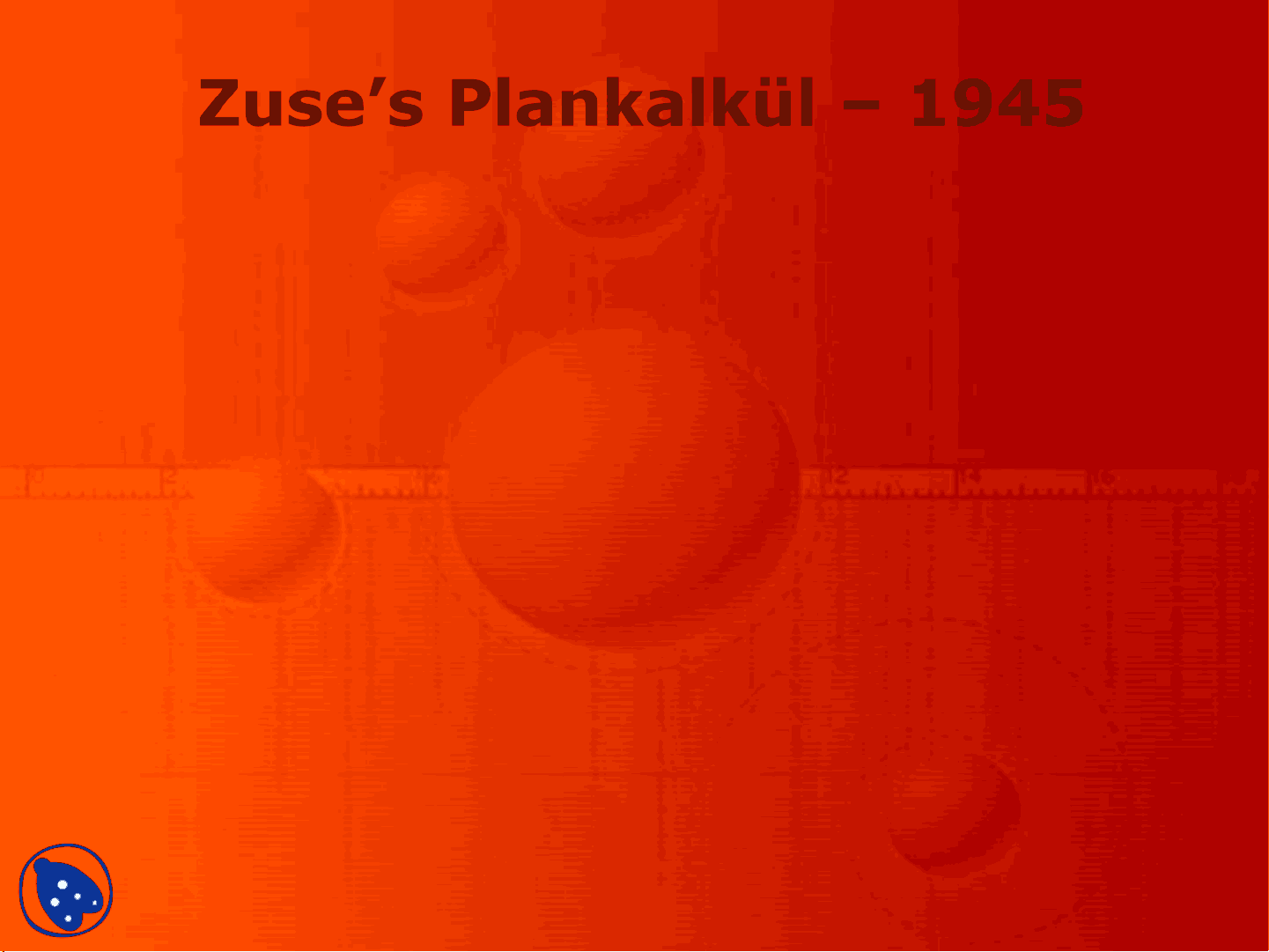
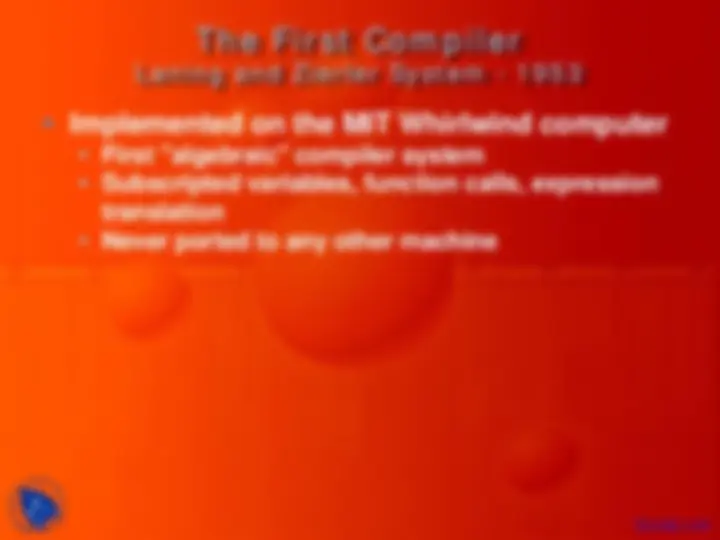
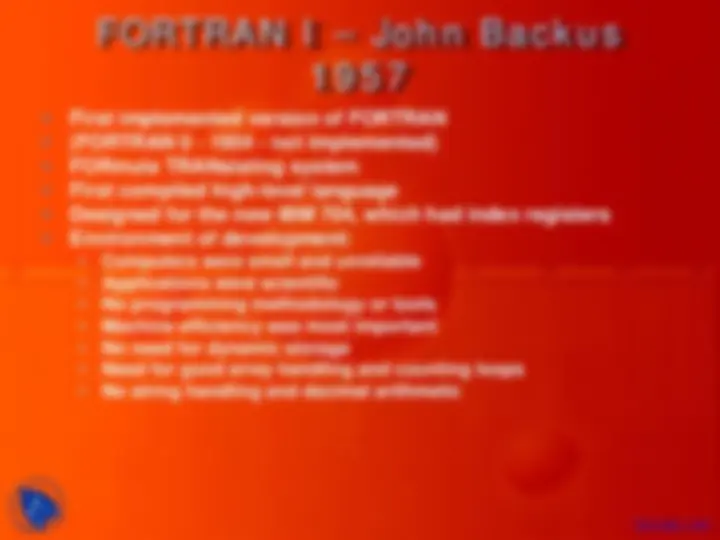

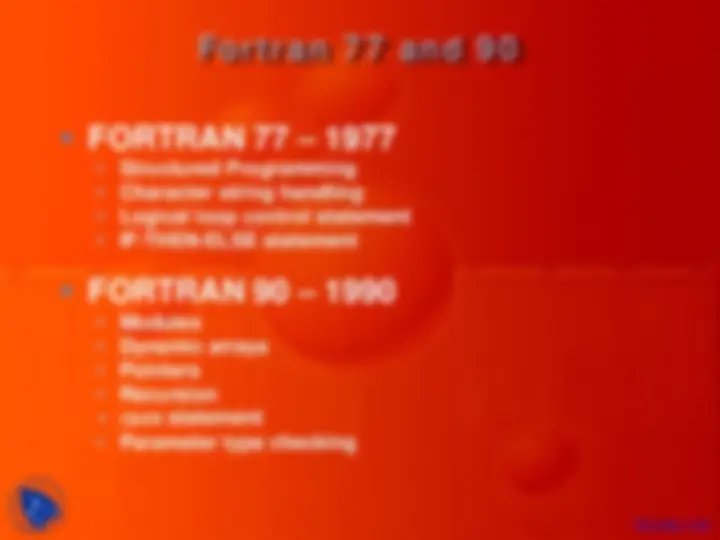
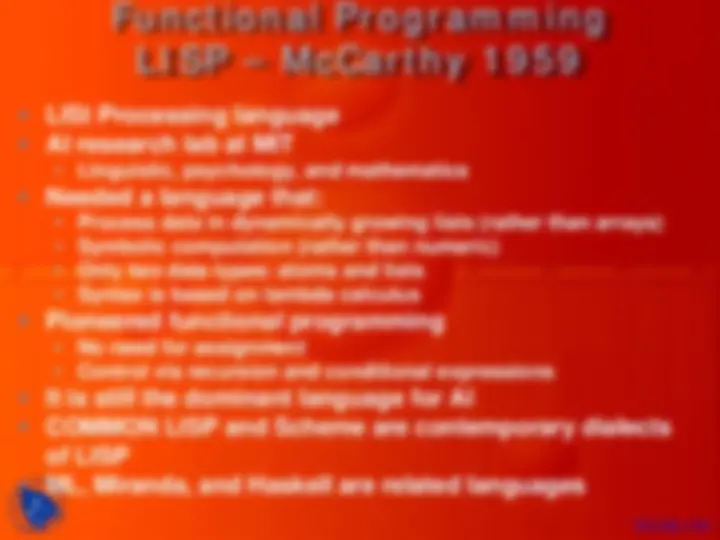
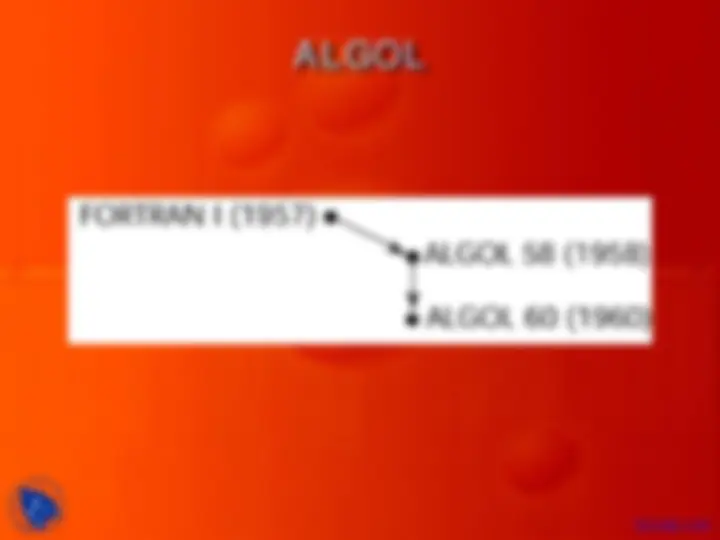
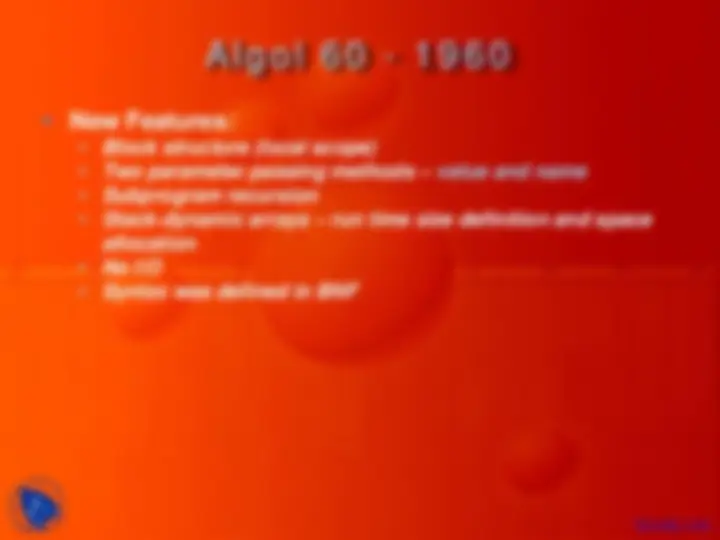
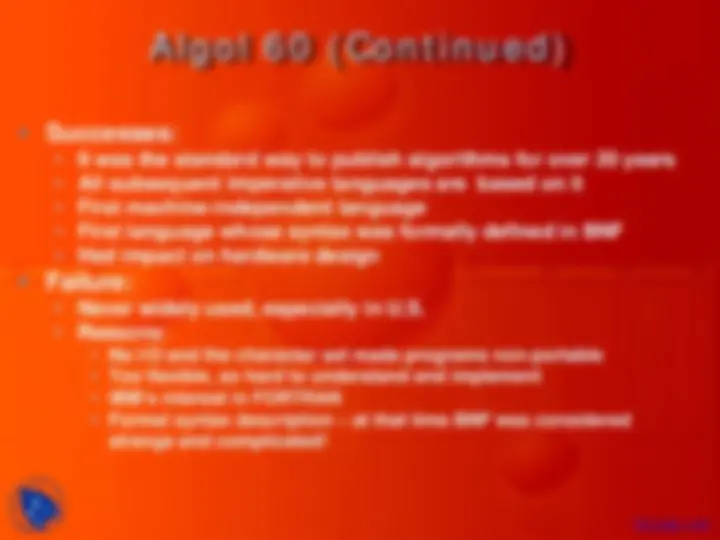
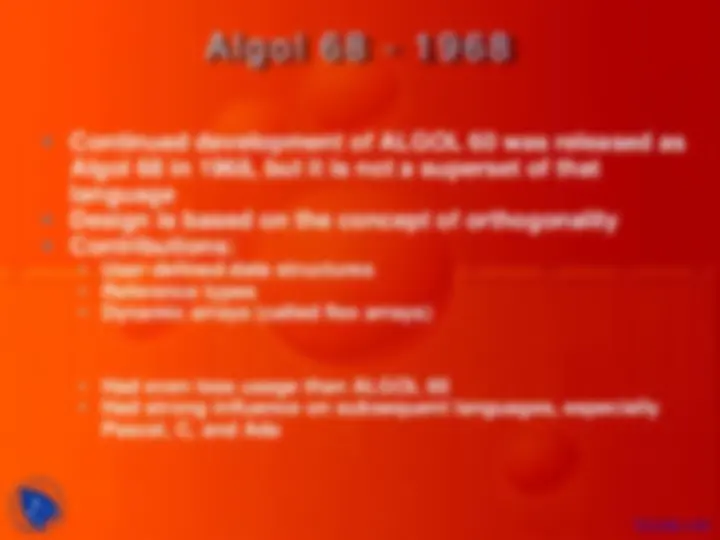


Study with the several resources on Docsity

Earn points by helping other students or get them with a premium plan


Prepare for your exams
Study with the several resources on Docsity

Earn points to download
Earn points by helping other students or get them with a premium plan
Community
Ask the community for help and clear up your study doubts
Discover the best universities in your country according to Docsity users
Free resources
Download our free guides on studying techniques, anxiety management strategies, and thesis advice from Docsity tutors
Assemblers, Assembly Language, Problem with machine code, Speedcoding, First Compiler, Implemented on the MIT Whirlwind computer, Influence of HW on Language Design are key points of this lecture. Programming languages is basic subject of computer science. Its not about any specific language but almost cover all of them.
Typology: Slides
1 / 15

This page cannot be seen from the preview
Don't miss anything!










on 704’s instruction set
Fortran 77 and 90
ALGOL 58 – 1958